Gold of Our Fathers - [15]
Then, Dawson reflected, Wei could even be the culprit. Who knows? All that babbling in Chinese might have been his confession: I killed my brother.
“Take him outside to sit down,” Dawson instructed, breathing heavily. What a way to start the day.
Kobby escorted Wei out as the Chinese man kept shouting something they didn’t understand. Now Dawson and Inspector Sackie were alone with the dead body. No police photographer meant Dawson had to improvise. He took his phone out, backed up, and took a long shot of the corpse and the interior of the shack before moving in. He photographed the ground around the body, including a white plastic bucket containing dirty water and a rag that Wei must have been using to wash his brother’s body, the two lengths of rope on, and a close-up of the knots. It might help determining left- or right-handedness of the killer, but not necessarily.
Dawson looked up at Sackie. “Do you have any specimen bags?”
The inspector shook his head. “No, sir, but I can send someone to get some from the town. Plastic, or paper?”
“Both plastic and paper, please.”
“Yes, sir.”
Sackie went outside, leaving Dawson by himself with the corpse. Dawson saw deep bloody gashes in the top of the scalp and wondered what had inflicted them. Perhaps a machete, probably the most common murder weapon in Ghana. Was that what killed this man?
Dawson picked up a twig and gently lifted the pile of rags and old clothes in case a machete was concealed underneath, but he found nothing. He looked up at the ceiling. Sometimes, people slipped weapons between the beams. Nothing there either.
He didn’t see blood spatter anywhere. If the man had not been bleeding when he was discovered, the wounds might have been inflicted postmortem, but Dawson still had to return to the original crime scene to look for signs of blood before he came to that conclusion. He took a look at the shotgun, examining it for bloodstains without success. He had been thinking that maybe someone hit the Chinese guy on the top of his head with the barrel or stock of the weapon.
He photographed Bao’s head wounds from different angles, both with and without the flash. When he moved his attention to the man’s face, Dawson recoiled. It was a picture of fright, as if he had died screaming. Perhaps in pain as the machete blows were delivered.
Or perhaps he was shrieking in terror as he was tied. Could be two assailants, Dawson reflected, because it was tricky to tie up someone who was struggling-especially in this bizarre position-and Dawson was pretty certain that, if his temper was anything like his brother’s, Wei was fighting at the time of death.
No marks on his belly, which was an odd, mottled grayish-yellow color. At the sides of his trunk closest to the ground, the purplish-red coloration of pooled blood-lividity-suggested the position he had been in after death: on his belly. To confirm, Dawson turned the body, which rolled in one piece, like an artless statue. Yes, there was the blanched, oval section on Bao’s abdomen, where his weight had prevented blood from pooling.
Dawson took photos of all of this, because the lividity would change with time, and if it took a while to get the body to the morgue, which he suspected it would, the corpse would deteriorate in all sorts of other ways.
Sackie returned as Dawson was taking pictures of the ligature marks on Wei’s wrists and ankles.
“Someone is bringing the bags for you, sir,” Sackie said.
“Thank you. How is the victim’s brother doing?”
“He’s just sitting there saying nothing.”
“Tell Obeng to escort him back to the taxi and wait for us. I’m going to look at the other site. When the bags arrive, I want these ligatures collected, all the clothes, the pots and pans, the shotgun, and the bucket. Please don’t throw the water out. There could be traces of blood in it.”
“Yes, sir.”
Dawson walked back to take a look at the site’s lone excavator resting high on the crest of the collection of pits. It was sullen yellow in color and caked with mud. The long boom attached to the hydraulic arm and the intimidating claw bucket bore the manufacturer’s name-XCMG. Chinese make, Dawson supposed. He turned to look around, the slight elevation affording him a better view. Several hundred meters away in the dry, unforgiving laterite where only the hardiest plants grew, two Toyota pickups were parked at an angle to each other. Dawson assumed that they belonged to the Chinese brothers.
He took a walk down to look the trucks over. They were similar, although different models. One of them, dull charcoal in color, looked like it had taken quite a beating on bad roads. The other, clearly a newer pickup, was metallic red. Dawson tried the doors, but both were locked. The inside of the charcoal vehicle was full of trash and discarded food cans. The red one was decent. Dawson looked closely at the truck beds for any signs-especially bloodstains-that the vehicle had transported Bao’s body from another location. He couldn’t find anything, but whichever pickup belonged to the victim would have to go to the Motor Traffic Unit (MTU) at Regional Headquarters in Kumasi for further examination.
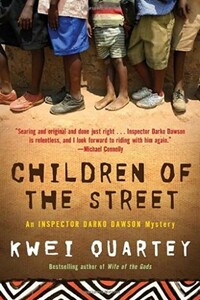
"Searing and original and done just right… Inspector Darko Dawson is relentless, and I look forward to riding with him again." – Michael ConnellyIn the slums of Accra, Ghana's fast-moving, cosmopolitan capital, teenagers are turning up dead. Inspector Darko Dawson has seen many crimes, but this latest string of murders – in which all the young victims bear a chilling signature – is the most unsettling of his career. Are these heinous acts a form of ritual killing or the work of a lone, cold-blooded monster? With time running out, Dawson embarks on a harrowing journey through the city's underbelly and confronts the brutal world of the urban poor, where street children are forced to fight for their very survival – and a cunning killer seems just out of reach.
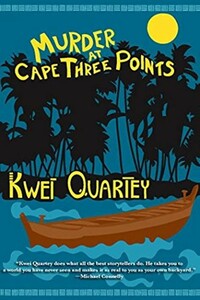
At Cape Three Points on the beautiful Ghanaian coast, a canoe washes up at an oil rig site. The two bodies in the canoe – who turn out to be a prominent, wealthy, middle-aged married couple – have obviously been murdered; the way Mr. Smith-Aidoo has been gruesomely decapitated suggests the killer was trying to send a specific message – but what, and to whom, is a mystery.The Smith-Aidoos, pillars in their community, are mourned by everyone, but especially by their niece Sapphire, a successful pediatric surgeon in Ghana's capital, Accra.
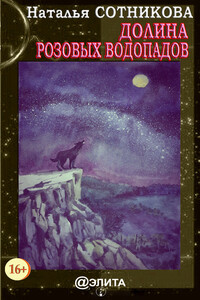
Однажды в руки безработной журналистки Екатерины Голицыной и её друга Николая Артюхова попадает странная флешка с видеозаписью. Известный американский писатель Майкл Доусон просит помочь ему в поисках исчезнувшей жены, Лии, родители которой погибли от рук китайской секты «Чёрное Братство». Следы Лии ведут в Россию.Старая китайская легенда неожиданно оживает в наши дни. Маленький научный городок Техногорск становится центром борьбы добра и зла. Оборотни, карлики, московский вор в законе, всемогущий мэр города и сам Магистр «Черного Братства».Кто может противостоять им? К тому же Николай исчезает самым странным образом.

Ирину Александрову в последнее время преследовали одни несчастья: смерть дяди, гибель тети, странные голоса по ночам, толчок в спину под колеса поезда — все эти события были связаны между собой. Но как — ответа не было. А ощущение чего-то страшного, неотвратимого, что должно произойти, нарастало.
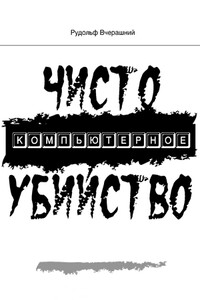
Заместитель командира воинской части в/ч № 755605 — собственно воинской частью был научно-исследовательский институт военно-морского ведомства — капитан первого ранга Гаврилов был обнаружен мертвым в своем рабочем кабинете. Прибывшая опергруппа не обнаружили каких-либо следов, отпечатков и других зацепок. Дело было поручено следователю военной прокуратуры Паламарчуку Василию Аполлинарьевичу.
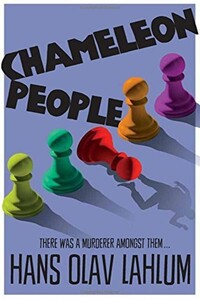
From the international bestselling author, Hans Olav Lahlum, comes Chameleon People, the fourth murder mystery in the K2 and Patricia series.1972. On a cold March morning the weekend peace is broken when a frantic young cyclist rings on Inspector Kolbjorn 'K2' Kristiansen's doorbell, desperate to speak to the detective.Compelled to help, K2 lets the boy inside, only to discover that he is being pursued by K2's colleagues in the Oslo police. A bloody knife is quickly found in the young man's pocket: a knife that matches the stab wounds of a politician murdered just a few streets away.The evidence seems clear-cut, and the arrest couldn't be easier.
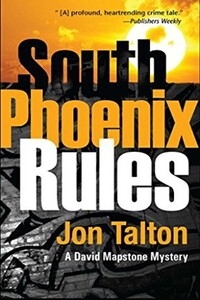
A handsome young New York professor comes to Phoenix to research his new book. But when he's brutally murdered, police connect him to one of the world's most deadly drug cartels. This shouldn't be a case for historian-turned-deputy David Mapstone – except the victim has been dating David's sister-in-law Robin and now she's a target, too. David's wife Lindsey is in Washington with an elite anti-cyber terror unit and she makes one demand of him: protect Robin.This won't be an easy job with the city police suspicious of Robin and trying to pressure her.
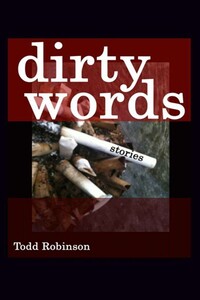
From the creator of the groundbreaking crime-fiction magazine THUGLIT comes…DIRTY WORDS.The first collection from award-winning short story writer, Todd Robinson.Featuring:SO LONG JOHNNIE SCUMBAG – selected for The Year's Best Writing 2003 by Writer's Digest.The Derringer Award nominated short, ROSES AT HIS FEET.THE LONG COUNT – selected as a Notable Story of the Year in Best American Mystery Stories 2005.PLUS eight more tales of in-your-face crime fiction.